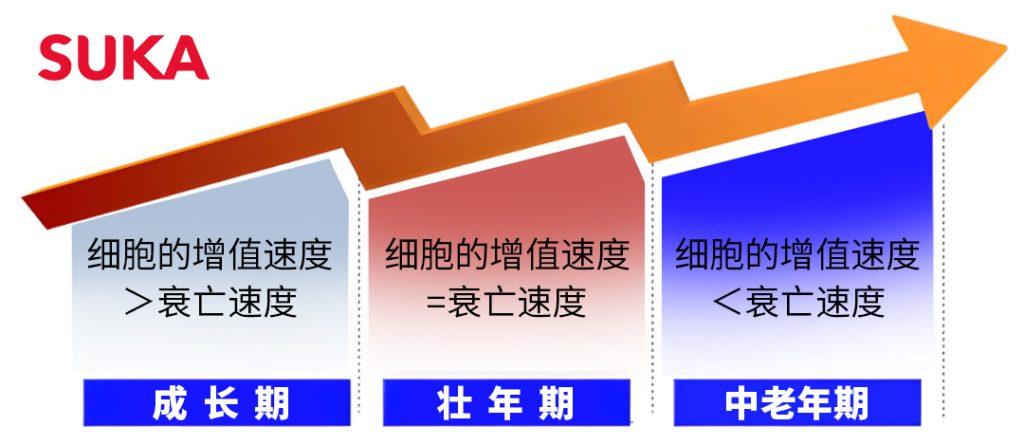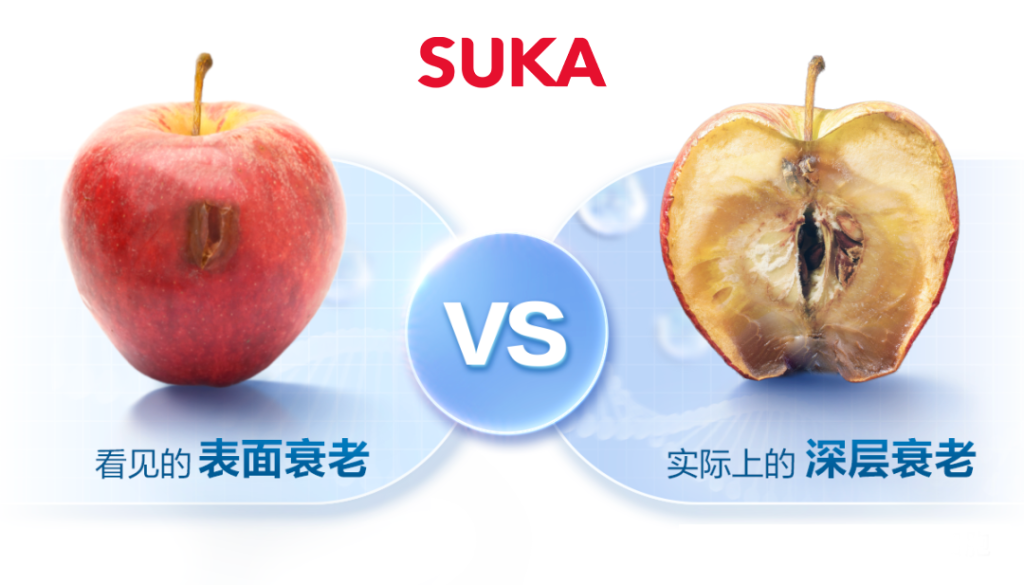“I always thought that people aged gradually, but it turns out, they age in an instant.” This quote from Haruki Murakami in “Dance Dance Dance” quickly became popular on the internet, epitomizing the concept of “cliff-edge aging.” When scientific research and various signs in real life indicate that aging does not occur at a constant speed but has several key physiological turning points, we are compelled to reexamine this natural law and seek more effective ways to combat aging.

In one’s lifetime, there are three “cliff-edge aging” moments.
As early as 2019, a study published in Nature Medicine titled “Variations in the human plasma proteome across the lifespan” analyzed the plasma proteins of 4,263 individuals aged between 18 and 95 years. It revealed significant “oscillations” in human plasma proteins at three specific ages—34, 60, and 78 years old—indicating that the body experiences “cliff-edge aging” at these stages.
“Cliff-edge aging” is not only reflected in external changes such as a sudden increase in wrinkles and a rapid decrease in skin elasticity but also involves the decline of internal bodily functions. For example, when corporate executives find they can no longer pull all-nighters, or when someone suddenly notices deeper laugh lines, these are all signs of aging.
More covertly, the decline in the functions of the five senses—such as hearing, vision, taste, and smell—as well as the development of chronic diseases like diabetes and arteriosclerosis, are also closely related to cellular aging.
Explosive growth in the anti-aging market
With the popularization of the concept of “cliff-edge aging,” the anti-aging market has experienced explosive growth. According to statistics from Euromonitor, the global anti-aging market size has grown from $150 billion in 2016 to over $220 billion currently, representing a growth rate of 49%. The domestic market demand is even stronger, with the market size increasing by $5.03 billion during the same period, an increase of 86%.
Despite the booming anti-aging market, most consumers’ anti-aging approaches are still limited to the superficial level. Facial appearance, as a prominent sign of aging, has become the main battleground for anti-aging efforts. Techniques such as skin boosters, botulinum toxin, and hyaluronic acid injections can achieve “age-freezing beauty,” but these methods are largely temporary and superficial repairs. In the skincare field, anti-aging ingredients like retinol, peptides, boswellin, and recombinant collagen are highly sought after, but their effects are also limited to the skin level.
The essence of aging: Cellular aging
To truly understand aging, one must start at the cellular level. The authoritative academic journal “Nature” defines aging as the irreversible cessation of cell division and the entry into a permanent state of growth arrest, which can be induced by unrepaired DNA damage or other cellular stresses. This indicates that the aging of the human body and its organs fundamentally stems from cellular aging.

Cellular aging not only affects the cell’s own functions but also triggers a series of chain reactions. For instance, cellular aging can lead to mitochondrial dysfunction, which in turn affects energy metabolism; nutrient sensing dysregulation affects the cell’s nutrient absorption and utilization; genomic instability, telomere attrition, and epigenetic changes can lead to a comprehensive decline in cell function. These changes ultimately reflect on various organs and systems of the human body, manifesting as overall aging.
Cell-level anti-aging is the “better solution”
Returning to the essence of aging, cell-level anti-aging has become the better solution. The core idea of cell-level anti-aging is to nurture cells and maintain their youthful functionality, thereby achieving anti-aging from the root. This concept breaks away from previous approaches that only targeted external appearances and instead focuses on cells, the smallest units of the human body, aiming for comprehensive anti-aging from the inside out.

Cell revitalization is the key to achieving cell-level anti-aging. Targeted activation of microcirculation and reinfusion of nutrients to protect cells achieve revitalization, delaying aging.
In conclusion
Cell-level anti-aging is not just a concept; it is a practice. By nurturing cells, we can fundamentally slow the aging process, maintaining health and vitality. Although cellular aging is irreversible, we can manage health through cell care, helping people extend their healthy lifespan.

